DeepLearning
Latest

Intel's ultra-efficient AI chips can power prosthetics and self-driving cars
Even though the whole 5G smartphone thing didn't work out, Intel is still working on hard on its Loihi "neuromorphic" deep-learning chips, modeled after the human brain. Now, it has unveiled a new system, code-named Pohoiki Beach, made up of 64 Loihi chips and 8 million so-called neurons. It's capable of crunching AI algorithms up to 1,000 faster and 10,000 times more efficiently than regular CPUs for use with autonomous driving, electronic robot skin, prosthetic limbs and more.

Stanford AI found nearly every solar panel in the US
It would be impractical to count the number of solar panels in the US by hand, and that makes it difficult to gauge just how far the technology has really spread. Stanford researchers have a solution: make AI do the heavy lifting. They've crafted a deep learning system, DeepSolar, that mapped every visible solar panel in the US -- about 1.47 million of them, if you're wondering. The neural network-based approach turns satellite imagery into tiles, classifies every pixel within those tiles, and combines those pixels to determine if there are solar panels in a given area, whether they're large solar farms or individual rooftop installations.
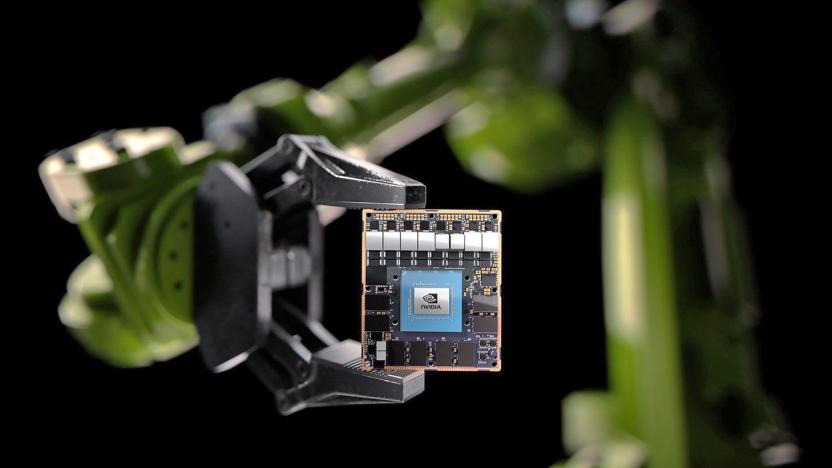
NVIDIA's $1,100 AI brain for robots goes on sale
NVIDIA's plan to power autonomous robots has kicked off in earnest. The company has released a Jetson AGX Xavier Module that gives robots and other intelligent machines the processing oomph they need for their AI 'brains.' You're not about to buy one yourself -- it costs $1,099 each in batches of 1,000 units. However, it could be important for delivery robots and other automatons that need a lot of specialized performance with relatively little power use.

AI reveals hidden objects in the dark
You might not see most objects in near-total darkness, but AI can. MIT scientists have developed a technique that uses a deep neural network to spot objects in extremely low light. The team trained the network to look for transparent patterns in dark images by feeding it 10,000 purposefully dark, grainy and out-of-focus pictures as well as the patterns those pictures are supposed to represent. The strategy not only gave the neural network an idea of what to expect, but highlighted hidden transparent objects by producing ripples in what little light was present.

AI faithfully recreates paintings with the help of 3D printing
It's easy to get a basic reproduction of a painting, but getting a truly accurate copy is harder than you think. Modern 2D printers typically only have four inks to work with, which simply won't do if you're trying to mimic a classic. Researchers at MIT's CSAIL might have a much better solution -- they've developed RePaint, a system that recreates artwork using an AI-guided 3D printer. The technology promises color-accurate reproductions even in less-than-flattering conditions.

Amazon’s next healthcare move is software that can mine medical records
Amazon is offering a new software that can mine medical records for information, the Wall Street Journal reports. The software can reportedly scan digitized patient records and pull out data, a service that healthcare professionals can use when considering treatments and hospitals can use to cut costs. "We're able to completely, automatically look inside medical language and identify patient details with incredibly high accuracy," Matt Wood, general manager of artificial intelligence at Amazon Web Services, told the Wall Street Journal.

Chinese news agency adds AI anchors to its broadcast team
China's state-run news agency Xinhua has unveiled the latest additions to its team of reporters -- two AI anchors. The two anchors, one that speaks in English and another in Chinese, have the likeness of some of Xinhua's human anchors, but their voices, facial expressions and mouth movements are synthesized and animated using deep learning techniques. "AI anchors have officially become members of the Xinhua News Agency reporting team," the agency said. "They will work with other anchors to bring you authoritative, timely and accurate news information in both Chinese and English."
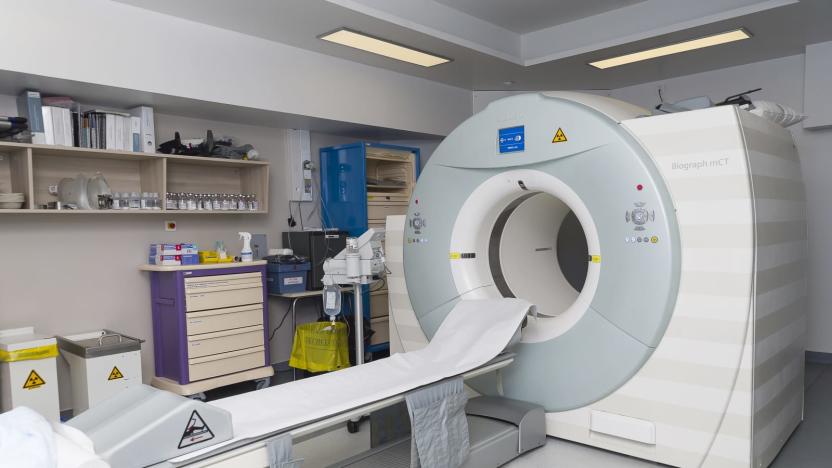
Researchers train AI to spot Alzheimer’s disease ahead of diagnosis
While Alzheimer's disease affects tens of millions of people worldwide, it remains difficult to detect early on. But researchers exploring whether AI can play a role in detecting Alzheimer's in patients are finding that it may be a valuable tool for helping spot the disease. Researchers in California recently published a study in the journal Radiology, and they demonstrated that, once trained, a neural network was able to accurately diagnose Alzheimer's disease in a small number of patients, and it did so based on brain scans taken years before those patients were actually diagnosed by physicians.

MIT's AI can identify breast cancer risk as reliably as a radiologist
Breast cancer affects one in eight women in the US. There are multiple factors involved in developing the disease, but one issue is dense breast tissue. Some 40 percent of US women have dense breast tissue, which alone increases the risk of breast cancer, and can make mammogram screening more difficult. Now, researchers from MIT and Massachusetts General Hospital (MGH) have developed an automated model that assesses dense breast tissue in mammograms as reliably as expert radiologists.
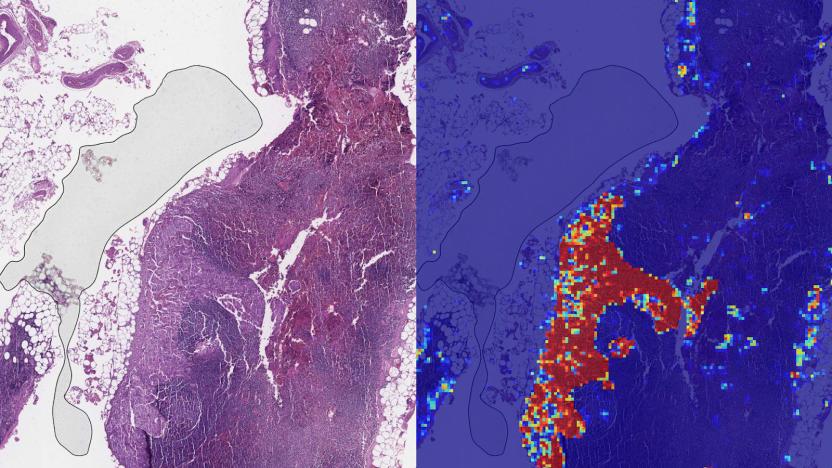
Google AI can spot advanced breast cancer more effectively than humans
Google has delivered further evidence that AI could become a valuable ally in detecting cancer. The company's researchers have developed a deep learning tool that can spot metastatic (advanced) breast cancer with a greater accuracy than pathologists when looking at slides. The team trained its algorithm (Lymph Node Assistant, aka LYNA) to recognize the characteristics of tumors using two sets of pathological slides, giving it the ability to spot metastasis in a wide variety of conditions. The result was an AI system that could tell the difference between cancer and non-cancer slides 99 percent of the time, even when looking for extremely small metastases that humans might miss.

Deezer's AI mood detection could lead to smarter song playlists
Astute listeners know that you can't gauge a song's mood solely through the instrumentation or the lyrics, but that's often what AI has been asked to do -- and that's not much help if you're trying to sift through millions of songs to find something melancholic or upbeat Thankfully, Deezer's researchers have found a way to make that AI consider the totality of a song before passing judgment. They've developed a deep learning system that gauges the emotion and intensity of a track by relying on a wide variety of data, not just a single factor like the lyrics.
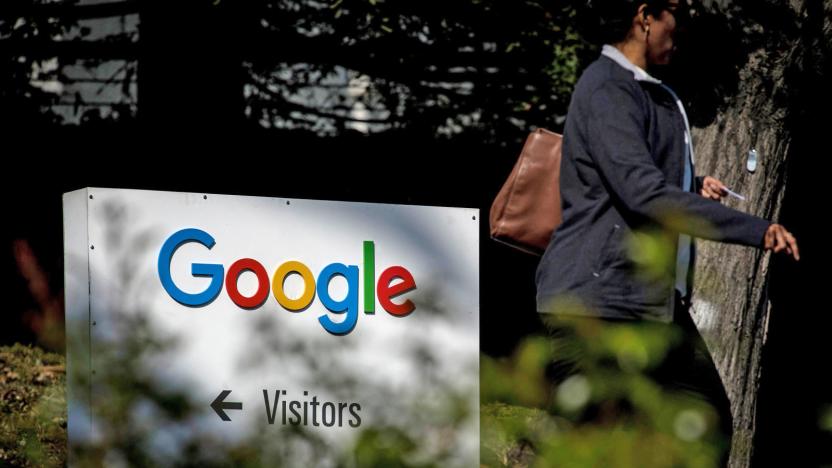
Google offers AI toolkit to report child sex abuse images
Numerous organizations have taken on the noble task of reporting pedophilic images, but it's both technically difficult and emotionally challenging to review vast amounts of the horrific content. Google is promising to make this process easier. It's launching an AI toolkit that helps organizations review vast amounts of child sex abuse material both quickly and while minimizing the need for human inspections. Deep neural networks scan images for abusive content and prioritize the most likely candidates for review. This promises to both dramatically increase the number of responses (700 percent more than before) and reduce the number of people who have to look at the imagery.
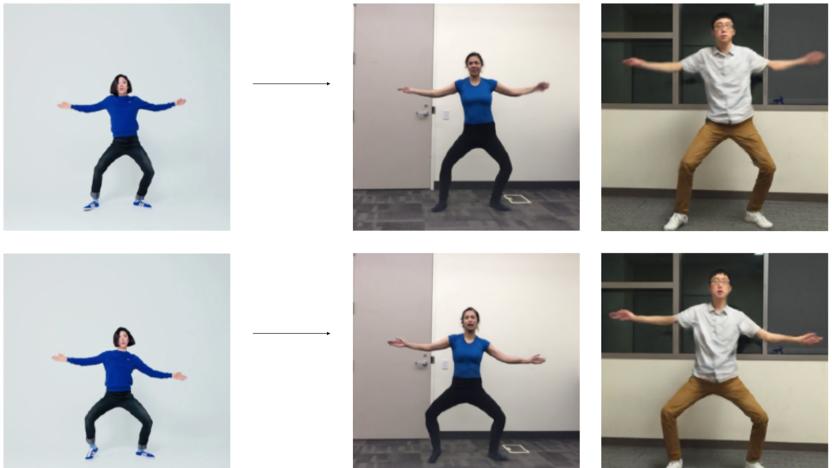
AI-altered video makes it look like you can dance
Can't pop-lock or Lindy Hop to save your life? Don't worry -- AI could soon make it look like you're a dance superstar. UC Berkeley researchers have developed a deep learning system that translates dance moves from a source video to less-than-experienced subjects. One algorithm creates a virtual skeleton to map poses, while two more algorithms square off against each other to both create the full picture and create a more realistic face for subjects as their virtual bodies twirl around. You do need the test subject to move around for a short while to get reference material, but the result is realistic enough to give an amateur the deftness of a ballet dancer.
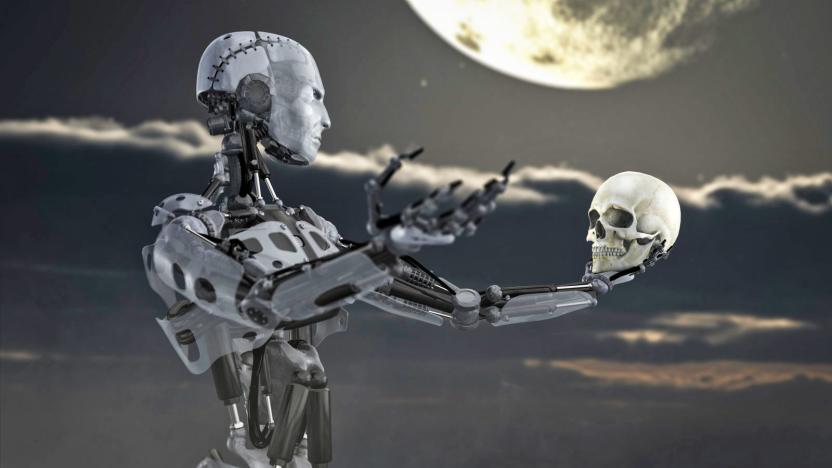
Researchers teach a computer to compose sonnets like Shakespeare
In addition to penning 37 plays, William Shakespeare was a prolific composer of sonnets -- crafting 154 of them during his life. Now, more than 400 years after his death, the Bard's words are influencing a new generation of poets. It's just that these writers do so with silicon imaginations and digital quills.

Fox AI predicts a movie's audience based on its trailer
Modern movie trailers are already cynical exercises in attention grabbing (such as the social media-friendly burst of imagery at the start of many clips), but they might be even more calculated in the future. Researchers at 20th Century Fox have produced a deep learning system that can predict who will be most likely to watch a movie based on its trailer. Thanks to training that linked hundreds of trailers to movie attendance records, the AI can draw a connection between visual elements in trailers (such as colors, faces, landscapes and lighting) and the performance of a film for certain demographics. A trailer with plenty of talking heads and warm colors may appeal to a different group than one with lots of bold colors and sweeping vistas.
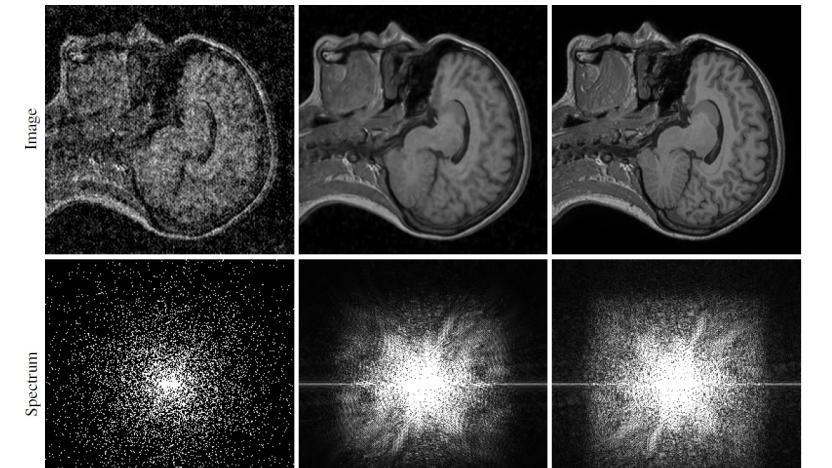
NVIDIA's AI can fix bad photos by looking at other bad photos
A team of researchers from NVIDIA, MIT and Aalto University have found a way to fix pixelated photographs using AI -- even if the AI has never seen a clean example of the target photo.
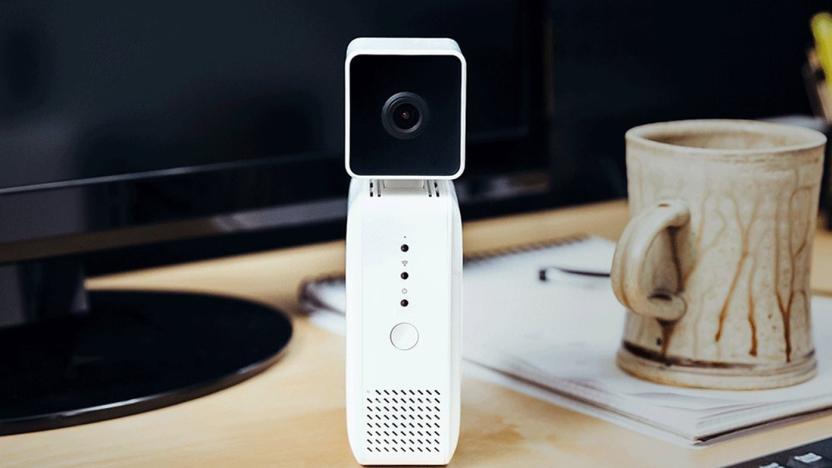
Amazon's DeepLens AI learning camera is now on sale for $250
Amazon is now shipping the $250 DeepLens camera it unveiled in November to help developers create AI image recognition apps and models. Though it looks pretty underwhelming, there's a fair amount of power in the smallish body. The camera 4-megapixel camera can shoot 1080p video, and the mini-computer below it packs 8GB of RAM and an Atom processor with 106 gigaflops of performance -- easily enough to run visual AI models offline.
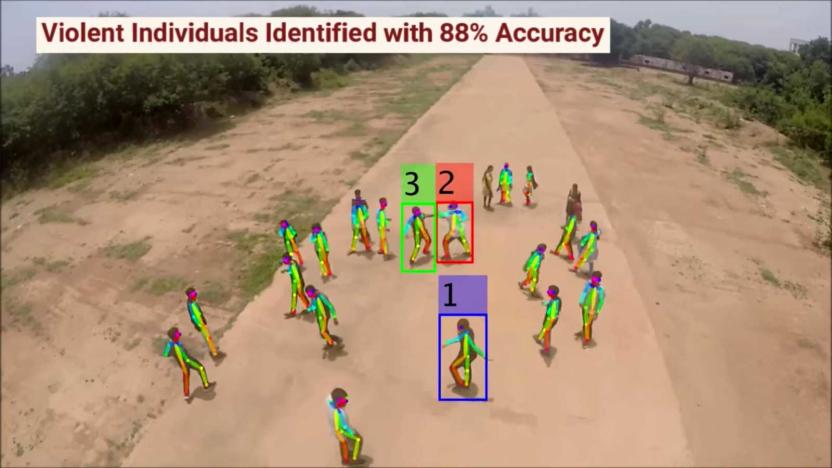
Experimental drone uses AI to spot violence in crowds
Drone-based surveillance still makes many people uncomfortable, but that isn't stopping research into more effective airborne watchdogs. Scientists have developed an experimental drone system that uses AI to detect violent actions in crowds. The team trained their machine learning algorithm to recognize a handful of typical violent motions (punching, kicking, shooting and stabbing) and flag them when they appear in a drone's camera view. The technology could theoretically detect a brawl that on-the-ground officers might miss, or pinpoint the source of a gunshot.
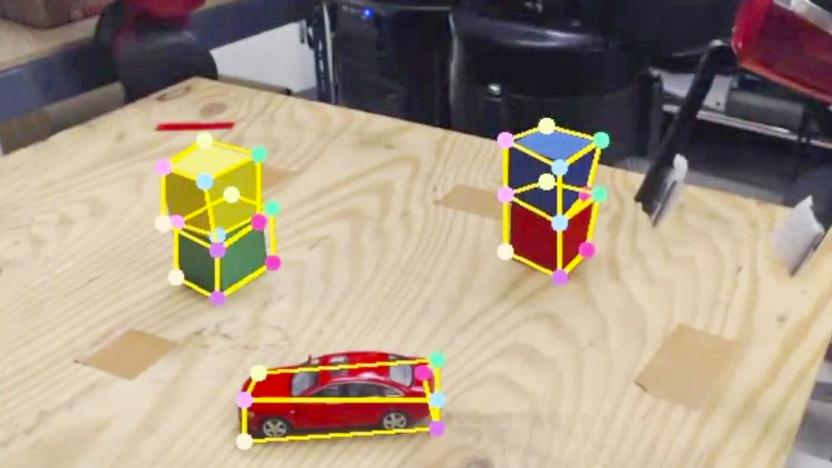
Robots can learn tasks by watching and mimicking humans
This week, NVIDIA revealed that its researchers have developed a unique deep learning system that allows a robot to learn a task based on the actions of a human. The focus here is on the communication between the robot and human, to the point where the robot can observe and mimic the human.

Facebook trained image recognition AI with billions of Instagram pics
Training deep learning models to recognize images, as well as objects within those images, takes quite a bit of effort. Often, each training image has to be labeled by humans and when you're using millions of images, that process becomes rather labor-intensive. Scaling up to billions of images becomes nearly impossible. So, Facebook has been working on a way to train deep learning models with limited human supervision. Instead, its researchers have turned to public images that are, in a way, already labeled -- with hashtags.






